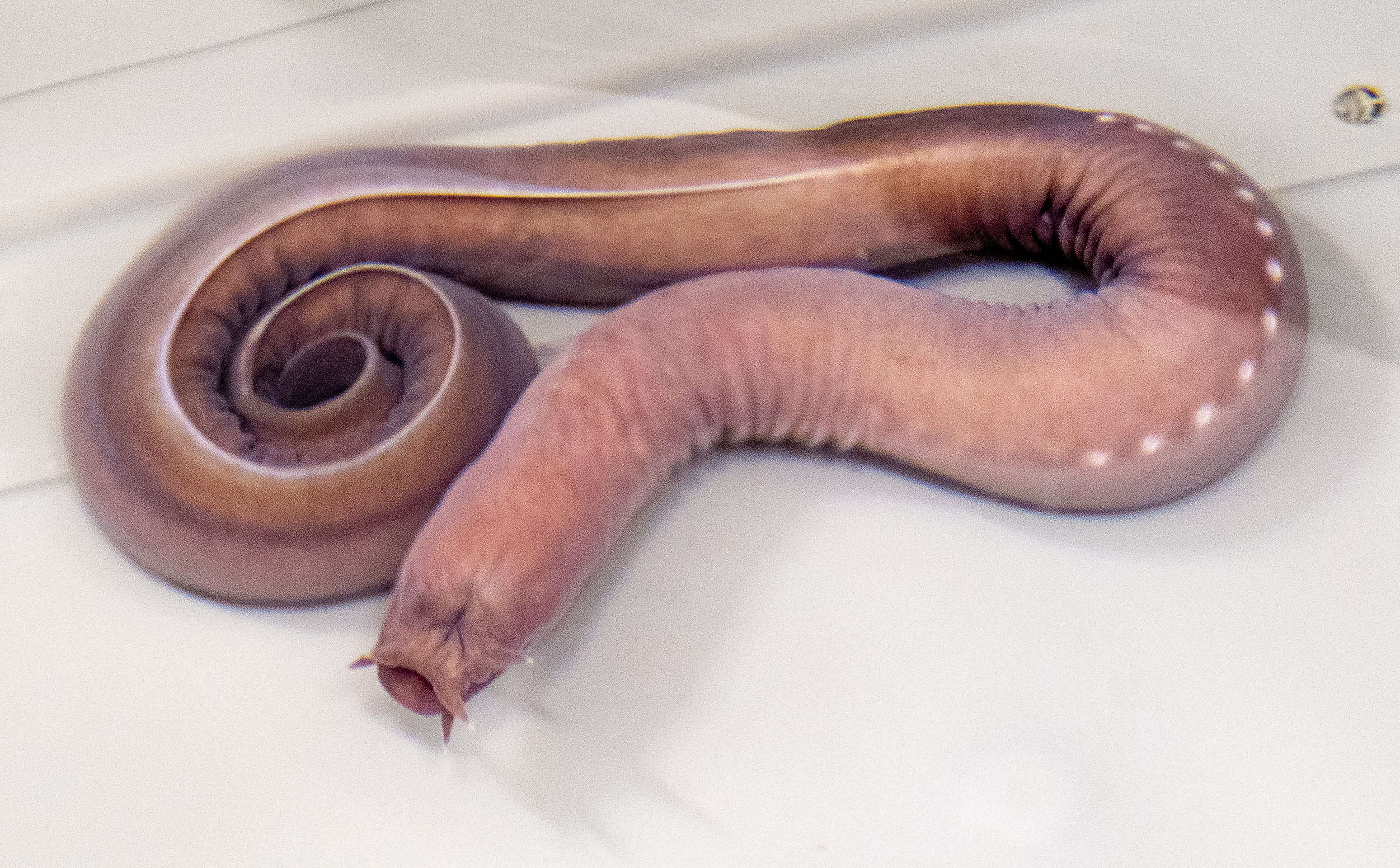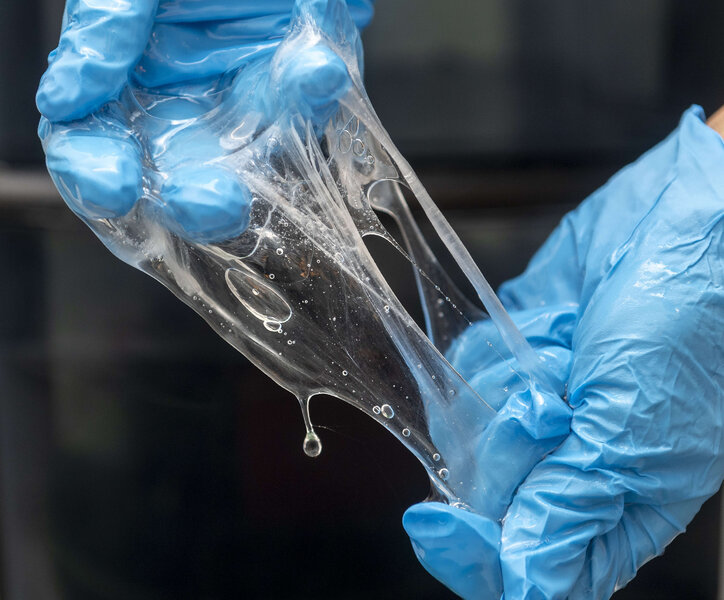Create a free profile to get unlimited access to exclusive videos, sweepstakes, and more!
He slimed me! Ghastly hagfishes ooze the strongest slime ever

It may be splattered everywhere in Ghostbusters, but slime is not an uncommon defense for creatures that don’t want to be eaten — by the Gozer or otherwise.
Slimer has nothing on hagfishes. He might fling glowing green stuff everywhere, but whatever ectoplasm it’s made of, it probably can’t stand up to the hagfish super-slime that clogs up the mouths and gills of hungry predators. Slime secreted by larger hagfishes is stronger than spider silk ad can hold up against the jaws of some really fierce carnivores; image a shark trying to get that out of its teeth. What even is this paranormal substance?
Hagfish slime is bizarre (even if it isn’t supernatural). Researcher Yu Zeng of Chapman University and his colleagues, who recently published a study in Current Biology, have now found that larger species of these alien-looking fish grow outsize cells for their slime. As hagfishes increase in size, so do the cells and the strength of their slime.
“Different prey animals have different tactics to evade predation,” Zeng told SYFY WIRE. “In the case of hagfishes, they heavily rely on their slime as a defense, so the cells that make slime threads are subject to selection (and thus push the size limit to make larger threads).”
The cells of substances produced by most animals stay the same size despite how huge the animal gets. Zeng wanted to see whether the size of the defensive cells in this slime, known as gland thread cells or GTCs was related to the size of larger hagfish that were trying to get away from larger predators. Usually, there is no change in most types of cells, from cartilage to keratin, even if an animal grows into behemoths like an elephant or blue whale. Hagfish slime cells are some of the hugest metabolically active cells and one of the few exceptions.
Because they live in the dark depths of the sea, hagfish lost most of their vision, and finding something to eat means seeking out worms and other invertebrates with tentacles around their mouths. Being nearly blind means something they can’t sense with their eyes might jump out of them at any moment.
That probably won’t matter much when the offender spits out the hagfish and is left with a mouthful of slime that also sticks its gills together. Hagfish themselves sometimes produce so much slime that they actually sneeze to get it out of their nostrils.
What continues to get weirder about larger species of hagfish all showing that they can ooze out slime with larger cells is that not all of them are closely related. Zeng believes that they adapted to predatory threats through convergent evolution, in which two unrelated organisms can develop certain features because of similarities in the environment they are faced with. In this larger hagfish attracted larger predators than their smaller brethren did. Evolving larger slime cells that were proportional to their body size allowed them to make stronger slime.
“Larger hagfishes are likely bothered by bigger (and more powerful) predators. Although there is no direct observation, this explanation is very likely, with parallels in other ecosystems, such as the Amazon rainforest, where larger snakes can hunt larger prey, like monkeys.”
Hagfish slime is not the only sticky defensive weapon out there. Spider silk is both sticky and, despite its ethereal appearance, strong enough to mean doom for prey that ends up tangled in it and tough enough not to break with the weight of a grasshopper. Both spider silk and slime are known as intermediate filaments, or fibers made of proteins, but the slime of a large hagfish has the toughness and strength to beat the silk of a spider. Their qualities have made them ideal for inspiring biomaterials that could hold up against just about anything.
Zeng is currently in on secret reserach that could eventually come up with such biomaterials, though what he can say how he and his team investigate the way sticky threads of slime are packed closely together like a skein of yarn.
“I start by visualizing the thread skein at different stages of development, reconstructing its configuration, and eventually developing mathematical models to describe the packaging process,” he said.
Looks like Slimer is the one who got slimed.



























